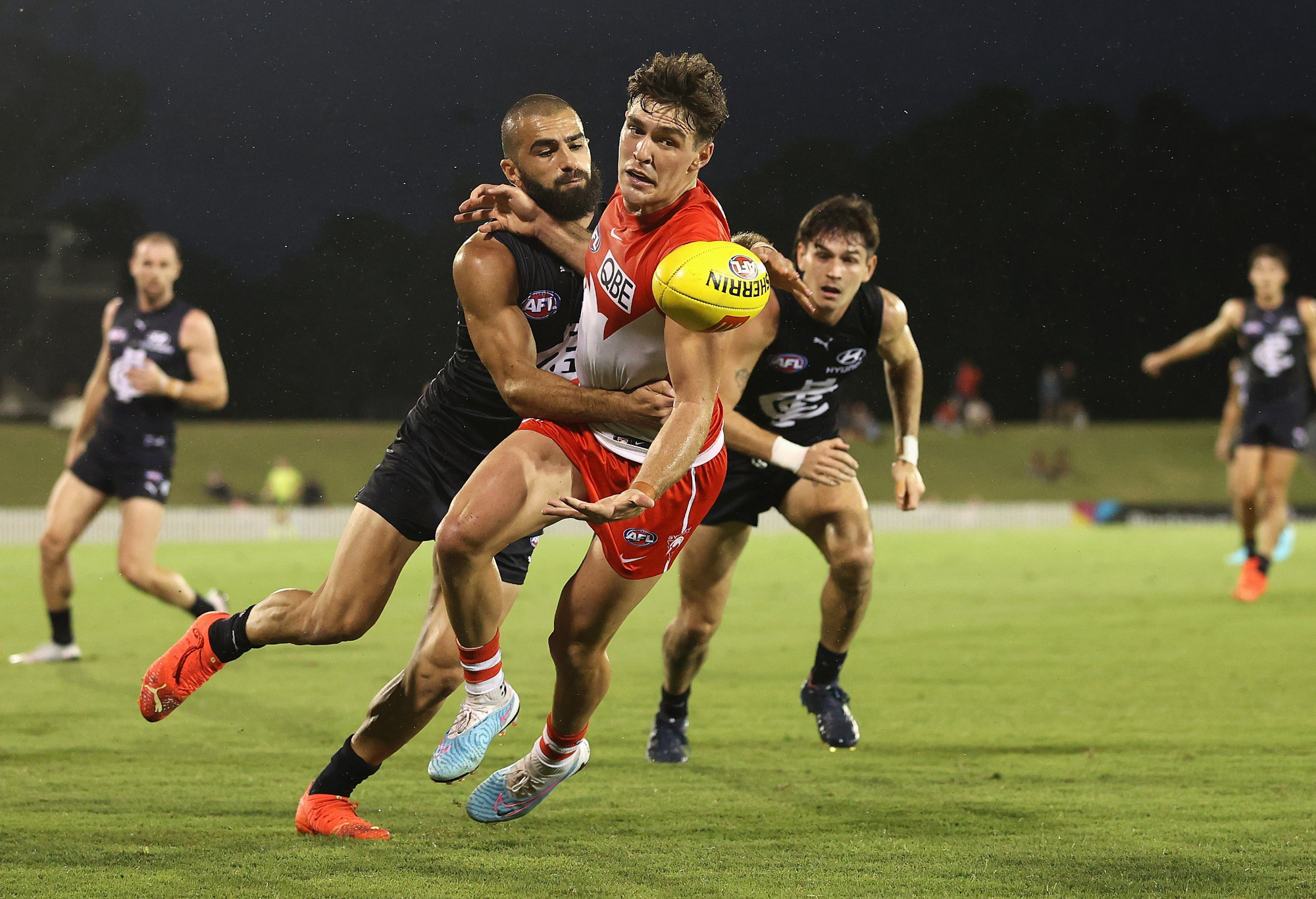The AFL continues to quietly murder the game while the footballing public sleeps.
They’re doing this through their unspoken, unacknowledged mandate to keep the ball in motion, whatever the cost.
Because, this is the thing: the AFL don’t want the play stopping. Every new rule and/or interpretation they’ve ever introduced is designed to keep the ball moving.
Let’s rewind: the deliberate rushed behind. Now it’s illegal to do so, unless the player is under pressure, although voices from some quarters suggest that all rushed behinds should be considered deliberate.
Then there’s “insufficient” intent, not “deliberate”, but insufficient. Deliberate implies that a player has purposely sent the ball over the boundary line. Not anymore.
With the rebrand, now it’s a case of a player being penalised even if they kick it fifty metres, the ball takes an unexpected deviation, and goes over the line – that player didn’t purposely send it out, but conversely didn’t try hard enough to keep it in.
On the weekend, I saw a player grab the ball in a pressure situation, start to drop it onto his boot, be tackled in mid-kick so that when he did kick, he was oblique in mid-air, and he kicked a wobbler that went out of bounds, and that was deemed insufficient intent.
How about all the marks being disallowed from kicks deemed too short? Have you ever heard, “Play on – not fifteen!” called out in any other season as much as you’ve already heard it this season?
The latest abomination is the new holding the ball interpretation, which legalises dropping the ball rather than the player holding on and not disposing of it.
Screw dropping the ball or illegal disposal. Just keep the ball free and in motion.
The game’s become an eyesore of imprecision – all because the AFL want to avoid stoppages.
These interpretations are wholly against the spirit of the game.
Why? Because they’re robbing players of a genuine alternative.
Like the deliberate rushed behind. You know, there is a penalty for rushing the ball – it’s called a point, and last I checked, you only need a single point to win a game.

Sam Docherty is tackled. (Photo by Robert Cianflone/Getty Images)
But now, players are expected to keep the ball in play – keep it moving.
Avoid the stoppage of a kickout. What about when there’s no option? What happens when the opposition is bearing down on the ball-carrier, ready to crush them? The ball-carrier’s choice? Not a lot, really, other than to fire off a panicked disposal into danger, offload the ball (and the problem) to a teammate, or wear the tackle and consequently lose the ball.
Same with insufficient intent. Sometimes, a player will win the ball in traffic and just kick it away to clear it. We see this constantly.
Now, though, if that ball goes out of bounds – if it deviates unexpectedly, and trickles over the boundary, even if this wasn’t the player’s intention – the act is punishable.
Again, what’s the ball carrier’s choice? Fire off a reflex disposal into greater danger? Offload the problem and hope for the best? Wear the tackle and be penalised? Stop me if you’ve heard this before.
It’s no different with the new holding the ball interpretation. Hey, we don’t want a player wearing a tackle and forcing a ball-up. And we don’t want to ping them, forcing a stoppage. Keep the ball moving.
Keep it moving.
Keep it moving.
Even something like the “stand” rule is designed to give the ball carrier the freedom to play on unimpeded, while the opponent on the mark is pinned to their position, and can only watch helplessly as the ball is carried away.

Errol Gulden of the Swans is tackled. (Photo by Cameron Spencer/Getty Images)
How many times have you seen a player on the mark look imploringly at the umpire to call “play on” while the ball carrier is free to steal more and more territory? In that instance, the rules effectively change the contest to 18 players versus 17.
Eff-you, AFL. You are steadily depriving players of options, instead forcing them into turnovers that’ll create options for the opposition, as well as scoring opportunities. Because we know how much the AFL loathes low scoring. Low-scoring games and/or games with a myriad of stoppages have long been considered an anathema to the AFL.
But why? Test cricket can have low scores, goes for five freaking days, and is still considered the premier type of cricket. Even T20 has long pauses and/or low scoring, and is a game (by virtue of its design) that can produce dud matches, yet look at the phenomenon it has become.
American Football is full of stop-start plays. Soccer can be slow and is definitely low-scoring. Tennis can go on for hours. Name the ball sport, and bar one, they have intermittent breaks.
It’s okay for games to involve pauses, especially in something as fast-paced as Australian Rules. It’s okay for players to find that temporary reprieve in rushing a behind, or kicking it fifty meters with no intention of sending it over the line, or to be rewarded when they execute a fundamental of the game: TACKLING.
Instead, limit a player’s options. Keep taking away the alternatives. Because, as cliché as it is, we’ll shape the game into that one exception: basketball.
Run the ball up the court for a score, then down the court for a score, and when a team loses possession, it should immediately result in a scoring opportunity for the opposition.
That’s where we’re heading.
Good on basketball for what it is, but it – and its mechanics – are not Australian Rules, and the AFL should stop trying to make our game something it’s not, and was never meant to be.
The game is plenty quick.
The game has plenty of highlights.
It doesn’t have to be turned into something it’s not, and was never meant to be.






